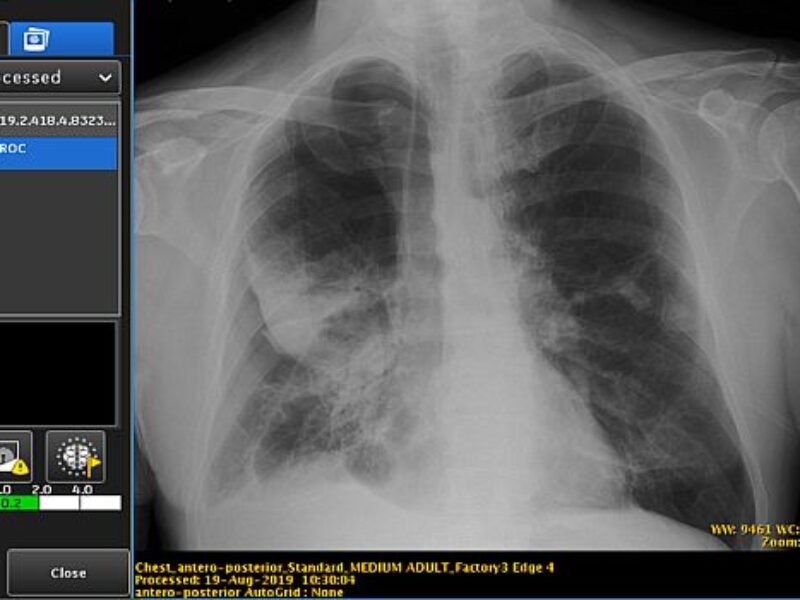
FDA clears embedded AI on mobile X-ray device
The FDA’s 510(k) clearance, says the company, was for its Critical Care Suite, a collection of AI algorithms designed to help reduce the turnaround time it can take for radiologists to review a suspected pneumothorax, a type of collapsed lung.
“X-ray – the world’s oldest form of medical imaging – just got a whole lot smarter, and soon, the rest of our offerings will too,” says Kieran Murphy, President & CEO, GE Healthcare. “GE Healthcare is leading the way in the creation of AI applications for diagnostic imaging and taking what was once a promise and turning it into a reality. By integrating AI into every aspect of care, we will ultimately improve patient outcomes, reduce waste and inefficiencies, and eliminate costly errors. Critical Care Suite is just the beginning.”
While a prioritized “STAT” X-ray can sit waiting for up to eight hours for a radiologist’s review, says the company, when a patient is scanned on a device with Critical Care Suite, the system automatically analyzes the images by simultaneously searching for a pneumothorax. If a pneumothorax is suspected, an alert – along with the original chest X-ray – is sent directly to the radiologist for review via picture archiving and communication systems (PACS).
The technologist also receives a subsequent on-device notification to give awareness of the prioritized cases. Quality-focused AI algorithms simultaneously analyze and flag protocol and field of view errors as well as auto rotate the images on-device.
Embedding Critical Care Suite on-device offers several benefits to radiologists and technologists, says the company. For critical findings, GE Healthcare’s algorithms are a fast and reliable way to ensure AI results are generated within seconds of image acquisition, without any dependency on connectivity or transfer speeds to produce the AI results.
These results are then sent to the radiologist at the same time that the device sends the original diagnostic image, ensuring no additional processing delay. Also, automatically running quality checks on-device integrates them into the technologist’s standard workflow and enables technologist actions – such as rejections or reprocessing – to occur at the patient’s bedside and before the images are sent to a picture archiving and communication system.
“Currently, 62 percent of exams are marked ‘STAT’ or for urgent reading, but they aren’t all critical,” says Jie Xue, President & CEO, X-ray, GE Healthcare. “This creates a delay in turnaround for truly critical patients, which can be a serious issue.”
“Not only does Critical Care Suite flag images with a suspected pneumothorax with impressive accuracy and enable radiologists to prioritize those cases immediately, but it also makes AI accessible,” says Xue. “Our embedded AI algorithms offer hospitals an opportunity to try AI without making investments into additional IT infrastructure, security assessments or cybersecurity precautions for routing images offsite.”
Critical Care Suite and the quality algorithms were developed using GE Healthcare’s Edison platform – which helps deploy AI algorithms quickly and securely – and deployed on the company’s Optima XR240amx system.
Related articles:
GE, Nvidia partner on next-gen intelligent healthcare
Algorithm beats radiologists in diagnosing x-rays
FDA approves HoloLens powered AR medical imaging system
AI device that detects diabetes-related eye disease gains FDA approval
 If you enjoyed this article, you will like the following ones: don't miss them by subscribing to :
eeNews on Google News
If you enjoyed this article, you will like the following ones: don't miss them by subscribing to :
eeNews on Google News




